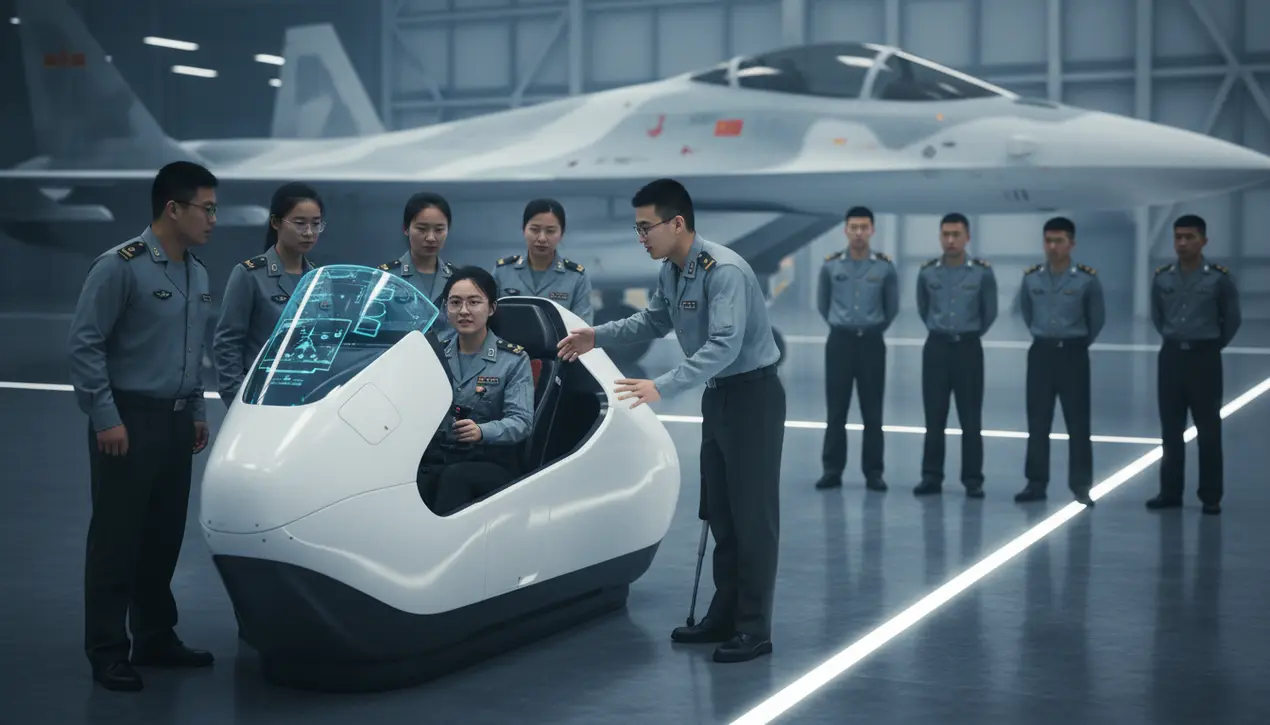
Politicsconflict & defenseMilitary Operations
China Eases Military Pilot Requirements Due to New Aircraft Cockpits.
MI
Michael Ross
8 hours ago7 min read3 comments
In a strategic pivot that mirrors the broader global trajectory of military-technology integration, China's People's Liberation Army has officially relaxed its historically stringent physical requirements for pilot candidates, a decision directly attributed to the advanced, human-centric cockpit designs of its newest generation of fighter jets. This isn't merely a bureaucratic adjustment to height, weight, and limb-length standards, as reported by the PLA Daily; it's a profound shift in the very philosophy of human-machine teaming, echoing the foundational debates in AI ethics famously presaged by Isaac Asimov's laws of robotics.The core of this evolution lies in the cockpit's transformation from a purely mechanical interface to a sophisticated cognitive partner. Modern warplanes like the J-20 stealth fighter are no longer flown with brute force and perfect 20/20 vision alone; they are managed through complex sensor fusion, data-link networks, and fly-by-wire systems that translate a pilot's intent into flawless aerodynamic maneuvers.This technological leap effectively democratizes the physical potential of a pilot, allowing a broader segment of the population to channel their cognitive abilities—situational awareness, decision-making under extreme stress, and tactical creativity—into controlling a multi-role aircraft worth tens of millions of dollars. The implications are staggering, both for China's military readiness and for the global balance of air power.By widening the recruitment pool, the PLA can now tap into a deeper reservoir of talent, potentially accelerating its pilot training pipeline to match the rapid production of its advanced aircraft, a critical component of its long-term challenge to US air dominance in the Pacific. However, this move also surfaces a classic Asimovian dilemma: as the machine becomes more capable and forgiving, does the human operator risk becoming a systems manager rather than a master aviator? Experts in aviation psychology are already debating whether this could lead to a degradation of fundamental stick-and-rudder skills, creating an over-reliance on automation that could be exploited in electronic warfare scenarios where these systems might be compromised.Furthermore, this policy change must be viewed through the lens of China's ambitious military-civil fusion strategy, which seeks to blur the lines between commercial technological innovation and warfighting capability. The same AI and ergonomic principles that make a modern cockpit more accessible are being developed in China's burgeoning tech sector, creating a feedback loop that continuously enhances military effectiveness.While the PLA Daily report remained tactically silent on the full revised criteria, the strategic message is clear: the future of aerial combat will not be won by the strongest pilot, but by the most seamlessly integrated human-AI system. This recalibration of the human component is a logical, almost inevitable, step in the ongoing dance between technological opportunity and strategic necessity, forcing other global powers to re-evaluate their own recruitment doctrines or risk being outmaneuvered in the next chapter of aerospace supremacy.
#China
#PLA
#military pilots
#physical requirements
#aircraft cockpits
#defense modernization
#featured
Stay Informed. Act Smarter.
Get weekly highlights, major headlines, and expert insights — then put your knowledge to work in our live prediction markets.
Comments
Loading comments...
© 2025 Outpoll Service LTD. All rights reserved.